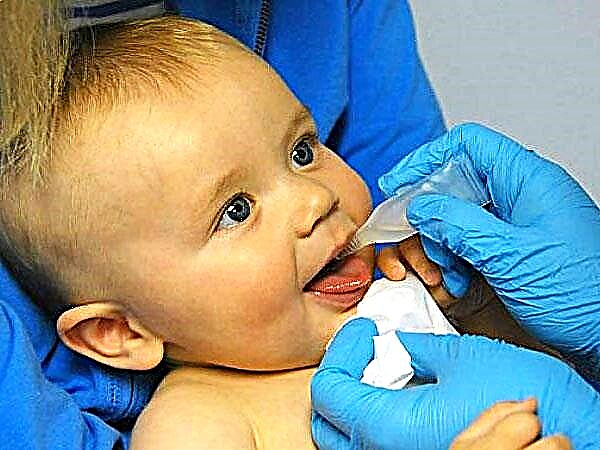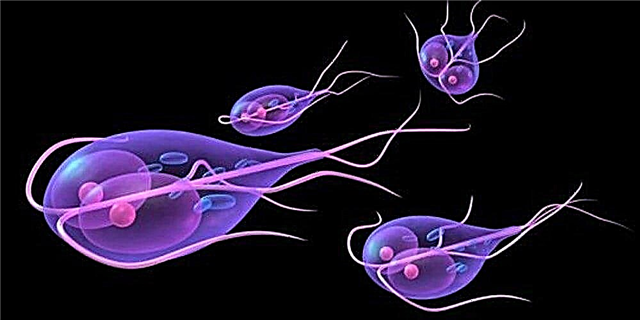
The overwhelming majority of women carry their babies up to 39-40 weeks of pregnancy. It is during this period, according to the Ministry of Health of Russia, that about 93% of children are born. The remaining 7% are babies who were in a hurry and were born before the appointed obstetric term (about 5%), or are in no hurry to be born, and “sit” in their mother’s tummy until 41, 42 and even up to 43 weeks. In this article we will discuss why labor does not begin at 42 weeks, is it normal and what to do.

How many months is it?
42 weeks gestation is the obstetric calculus of gestational age. Doctors consider the gestation period from the first day of the last menstruation. In fact, it took about 40 weeks from conception. It's a full nine months and two more weeks (in 1 month on average - 4,285 weeks).

Normal or pathological?
This is the main question that torments both the women themselves and her relatives at 42 weeks of pregnancy. On the exchange card, the estimated date of delivery is a date that was about two weeks ago, but the delivery does not begin. Because of this, as well as because of severe physical and emotional fatigue, a woman is in constant stress, many are already waiting for childbirth as salvation, since it has become difficult to carry a pregnancy.
Experts reassure - there is no talk of prolonging the question. At 42 weeks, childbirth, although this happens quite rarely, is still a variant of a completely normal, full-term, simply prolonged pregnancy. A post-term pregnancy is considered to be from 43 weeks.

Mother nature itself may well extend gestation to 42 weeks, if, for example, obstetricians' calculations were inaccurate. A woman, when registering, could be mistaken with the date of the last menstruation, ovulation could be late, as a result of which implantation was also delayed. This is the most common reason why a woman at 42 weeks is still at home, her bag, collected at the hospital more than a month ago, is almost at the doorstep, and every day for the expectant mother begins with the fact that she listens to her body in attempts to find at least some signs of an impending birth.
Prolonged pregnancy can also have other reasons - for example, the mother's overweight, her sedentary lifestyle, hormonal disorders in her body. All preparations for childbirth are "guided" by hormones, and if there is an imbalance in their concentration and ratio, childbirth may be delayed.
Even 20 years ago, women at 42 weeks were rigorously hospitalized and inducted into labor or had a cesarean section. Now obstetricians look at this period a little differently - if the baby is not going out yet, then nature needs it that way. Therefore, week 42 should not cause any panic and excitement either in the doctor or in the woman.

What is the baby like?
The weight and height of a child at this time largely depends on heredity - large parents usually give birth to rather big babies, miniature mom and dad "receive" a small bundle in the hospital.
On average, babies weigh more than 42 weeks 3 kilograms 600 grams, height - more than 52 centimeters. And the child continues to grow, although it seems that he has nowhere to grow further - it has become very crowded in the uterus.
The fact of the incessant growth of the baby, which until recently the expectant mother and all her relatives were so happy about, now does not cause enthusiasm - after all, the larger the toddler, the more difficult the birth is usually and the risk of the baby getting birth injuries increases.

A baby at 42 weeks is a fully formed person, ready for life in this world. All organs and systems work for him, the heart beats rhythmically, the liver and spleen produce hormones and enzymes, the stomach digests the swallowed amniotic fluid, a supply of the first crumbs in life is deposited in the intestine - dark green meconium, which will come out of the rectum on the first day after birth.
The child perfectly hears, sees light, senses. His nervous system continues to improve, but this process will continue after birth. Neonatologists say that a child at 42 weeks pregnant is worried and worried with his mother, because he, too, is already completely ready for birth, which for some reason does not start.

The placenta is getting older and thinner. On the one hand, this is not very good, since the child receives less oxygen and nutrients, but, on the other hand, his immunity is "trained". The aging placenta, which cannot be a full-fledged barrier, begins to allow maternal antibodies to the baby to various diseases, viruses, infections that the mother once was sick with or from which she was vaccinated.
Children born earlier also have this innate immunity, but to a lesser extent. This immunity is not considered lifelong, it will to some extent protect the baby only during the first months of his life, when the child's body is most vulnerable and defenseless.
The baby's lungs at 42 weeks are completely ready for opening, the amount of accumulated specific surfactant substance is sufficient so as not to worry if the baby can breathe on its own in the hospital.

This week, the baby continues to accumulate subcutaneous fat, its shapes are rounded, on a three-dimensional ultrasound, if it is done at this time, you can see chubby cheeks and cute "dimples". In general, it looks exactly the same as it would look at the time of birth. At this time, his bones become stronger, they gradually harden, which can create additional difficulties during childbirth.
How does mom feel?
The belly has become so huge that it is now very difficult for a woman to wear it, therefore, at 42 weeks, the vast majority of expectant mothers have emotional instability, nervous breakdowns, and insomnia. They are caused not only by fatigue and anxiety, but also by hormonal changes: the woman's body is under the influence of the hormone relaxin, which is responsible for the softening of the pelvic bones, which is necessary to overcome the birth canal with the least discomfort.

Due to the divergence of the pelvic bones, a woman experiences pain in the bosom, the pain intensifies while walking, when trying to get out of bed. Unless they are permanently torturous and restrict movement, there is nothing to worry about. You can take "No-Shpu", which has a pronounced antispasmodic effect.
42 weeks of pregnancy in many women is associated with the appearance of edema. Even those who have not had swelling before, at this time, swelling may appear on the hands, face, ankles. Due to the strong pressure of the grown uterus and fetus on the lower veins, women often manifest hemorrhoids, varicose veins.

Intestinal problems literally haunt most of the expectant mothers at this time. The grown uterus compresses the intestinal loops, displaces them and the gallbladder upward, as a result of which a woman may complain of flatulence, that she is sick even after a small amount of light food. Loose stools and constipation often make themselves felt.
A woman's discharge may change. Against the background of occasionally appearing pulling pain in the lower back, mucous, light or brown discharge with streaks of blood or gelatinous clots may appear. This may indicate that the woman is losing the so-called plug - mucus, which closed the cervical canal and protected the uterine cavity from the penetration of all strangers during the entire pregnancy. The cork sometimes comes out entirely, and sometimes goes away gradually, over several days.
A clear, colorless, watery discharge may indicate water leaking. Abundant watery discharge indicates a one-time discharge of water. In this case, you should go to the obstetric institution.

What if there are no signs of labor?
If the term for which the birth was scheduled has long passed, and the woman does not feel any symptoms and signs of an impending birth, do not worry and panic. Not all precursors of childbirth appear in advance; in some cases, childbirth begins with a complete absence of precursors.
Anyway at 42 weeks a woman should definitely visit her attending physician who will help distinguish prolonged from post-term pregnancy. Overdue has quite definite clinical signs, it poses a danger to the baby and mother.

We can talk about prolongation if:
- the amniotic fluid level is very low, the amniotic fluid index is at a critically low level;
- in the amniotic fluid, ultrasound detects flakes, suspensions, they are cloudy;
- The placenta is aging, it has significantly decreased in thickness, USDG shows insufficient blood flow through the "placenta-fetus" system.
A woman at 42 weeks will undergo CTG to make sure that the child is feeling well, measure the level of amniotic fluid, manually examine the state of the cervix on a gynecological chair.
If the cervix turns out to be long and immature, then a caesarean section will be offered if the alarming symptoms of prolongation are detected.

If the cervix is mature, smoothed, there is a small opening for 1-2 fingers, but there are no contractions and labor does not begin, the doctor may recommend hospitalization and stimulation of natural labor. It is carried out medically. The drug is often used "Mifepristone" - a hormonal agent that blocks the production of progesterone.
Without this hormone, pregnancy cannot continue. The muscles of the uterus begin to contract, labor starts and proceeds quite naturally. Stimulation of labor with hormonal medications has many contraindications, including preeclampsia, renal failure, hemostasis disorders, late toxicosis, abnormal fetal position, heart and liver diseases in women, etc.
After medication, labor usually begins within 48-72 hours. In addition, doctors can puncture the membranes to stimulate labor.

If the doctor does not see any signs of prolongation at the reception, he will let the expectant mother go home to wait for the spontaneous onset of labor.
Representatives of the older generation remember themselves and advise their daughters and granddaughters to “drink castor oil”. Castor oil is a powerful laxative, and bowel cleansing promotes the production of prostaglandins and the onset of labor. Modern medicine warns against such a method - castor oil acts too strongly, it can provoke unwanted childbirth, and diarrhea and vomiting that are completely unnecessary now for a woman and a child, which will only complicate the life of the expectant mother at 42 weeks of pregnancy.

Sex
A woman can "help" nature if she is more active, mobile, if she has sex (provided that the mucous plug from the cervical canal has not moved away), and also massage her nipples (while producing oxytocin, which has the property of contracting the muscles of the uterus ).

Recommendations for this period
Walking and activity are not contraindicated for a woman, but experts do not advise leaving far from home - childbirth can begin at any time. If there is a need to leave, you should definitely take your passport, medical insurance policy, exchange card with you in your purse. A bag with necessary things and supplies for the hospital must be collected and stand on full alert in a conspicuous place.
Particular attention should be paid to your diet at this time, because the gastrointestinal tract is subject to enormous stress. A woman should reduce portions, add vegetables and fruits to the diet, reduce the amount of meat and fish, and exclude bread.

Also, do not take dairy products, since at 42 obstetric weeks and at a faster pace, the baby's skull bones are hardening, excess calcium can now do a disservice.
If atypical discharge appears, water from the genitals, blood, green fluid has gone, you should call an ambulance and go to the hospital. All of these conditions require medical presence and supervision.
A woman at 42 weeks should protect herself from viral and other diseases. Any infection, even if it manifests itself as a banal runny nose, upon admission to the maternity hospital will be the basis for placing the woman in labor in the observation department.

You should be very attentive to your own feelings - if the lower back is pulling, this is not considered the beginning of labor, but pulling pain in the lower back, combined with atypical discharge and pain in the lower abdomen, is already a reason to arm yourself for hours and check if contractions have begun ...
For information on what the signs of a child's postmaturity may be, see the next video.



